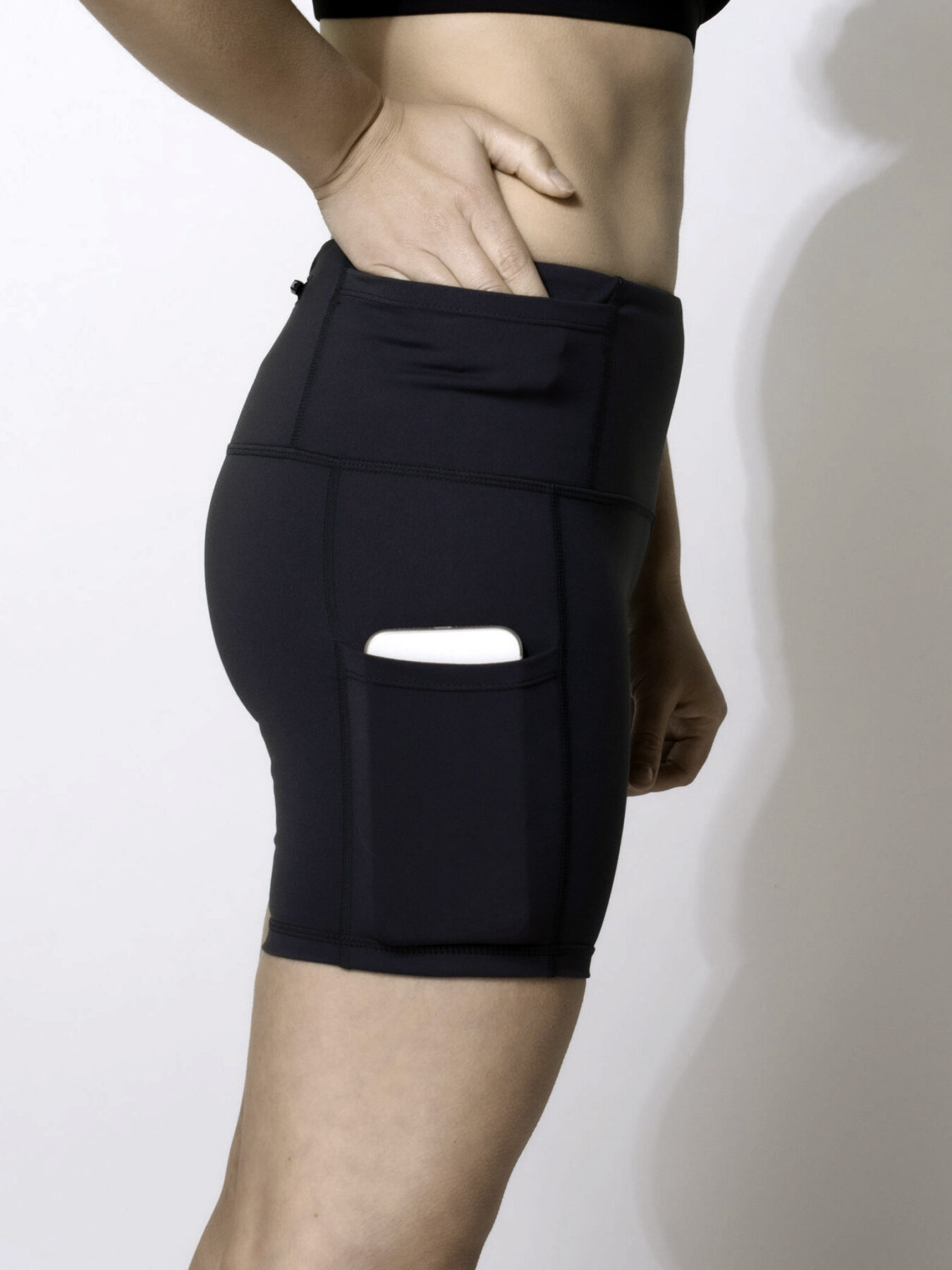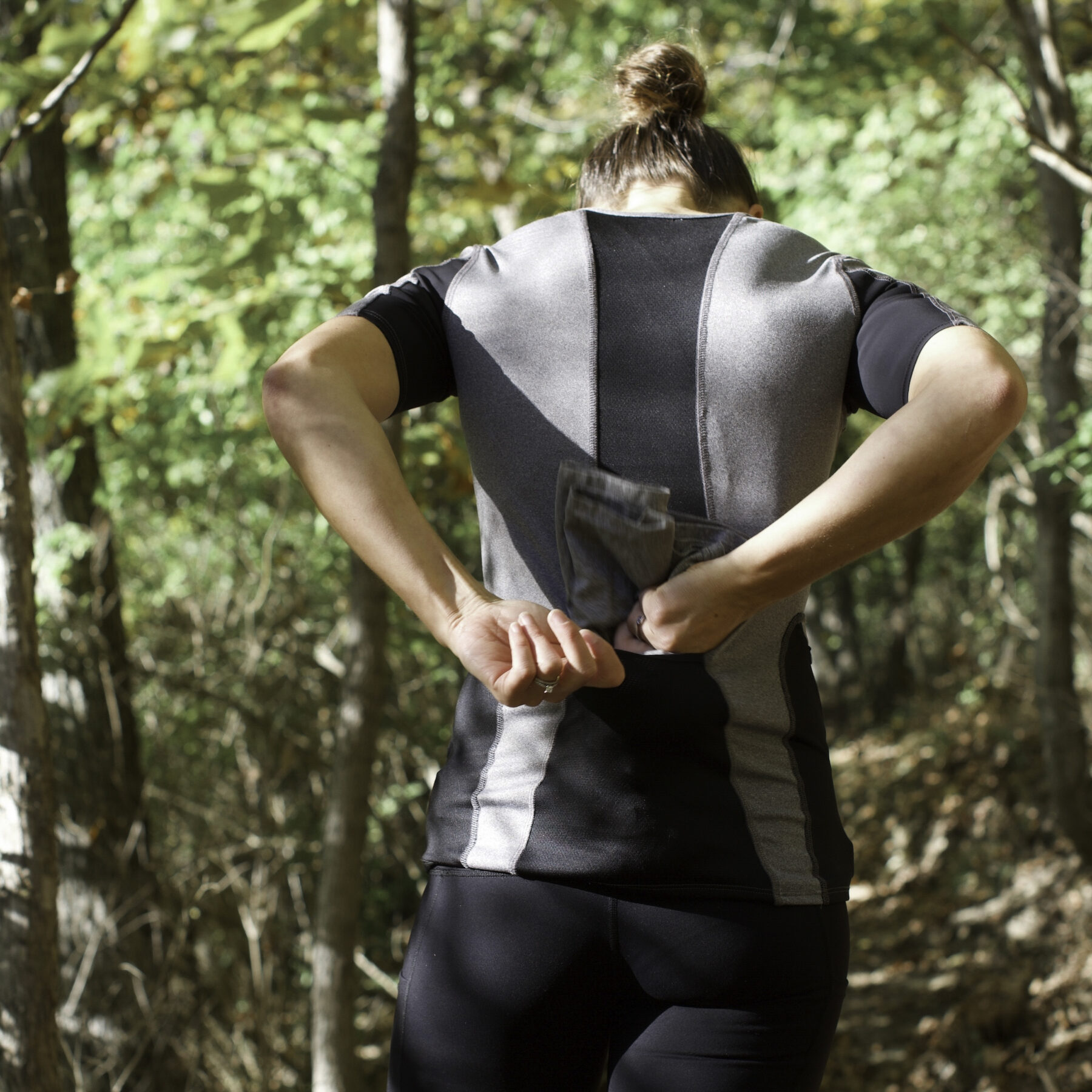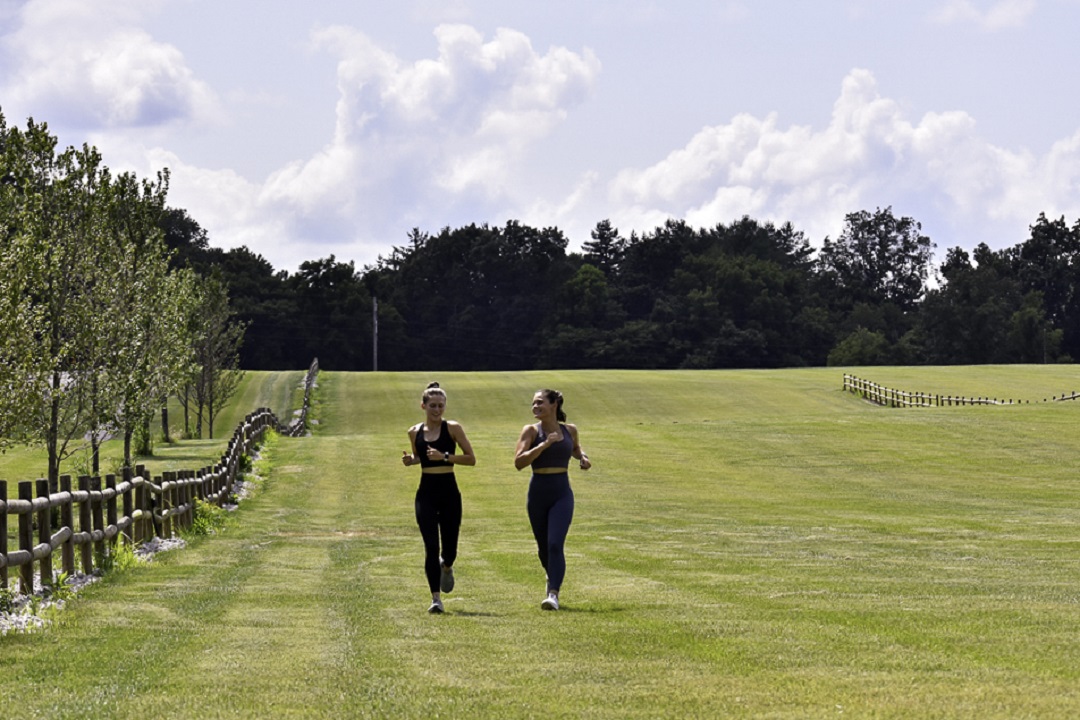The innovative spark behind Constantia Gear, a line of women’s running apparel created by St. Louisans Constance and Jerry Young, traces back to some old proverbs. Necessity is the mother of invention. Honor your elders. And keep it simple, stupid.
Constance has enjoyed running, orienteering, and adventure sports since she was young but upped her game in 2016 as a student at Illinois State, when she entered a half-marathon.
“I had to carry my GU and phone, and all I had to store them in was this small, useless pocket in my shorts,” she said. She tried armbands, which cut off circulation, and hydration belts, which clunked around. “I thought a training run or race didn’t need to be this complicated.”
Seeking an elegant storage solution, she sought advice from Jerry, her father. Jerry worked in the business with Kangaroos, the original shoe with the pocket that was birthed in St. Louis in the late 1970s. As the shoes became popular, the brand expanded into what came to be known as athleisure.
With this base of knowledge, father and daughter designed a technical shirt that could hold keys, phone, nutrition, water, and whatnot while allowing freedom of movement. They enlisted Constance’s older sister, Melissa, an avid ultramarathoner and adventure racer, to test four or five prototypes until they hit upon the Limitless Shirt. We dare you to find the six pockets hidden in its sleek silhouette.

The Constantia 50 Mile Shorts.
Starting with $30,000 of their own — out of pocket, if you will — they launched Constantia Gear, a play on the founder’s name and the Latin word for perseverance. Though the line now includes shorts, capris, leggings, a bra, cap, and vest, the company sells exclusively online at constantiagear.com and fulfills all its orders from inventory housed in Constance’s spare room. The company’s hottest sellers are 50 Mile Shorts ($35), with a 6-inch inseam and five pockets. Jerry says that after trying a pair, many customers return for a second or third. They’ve sold out a few times but can restock in 30 to 60 days.
“We try not to buy big quantities, so we can respond to the consumer,” said Constance, adding that supply chain backups affect them less because ordering in small quantities (100 at a time) affords them the option to use air freight, rather than let inventory sit in port or offshore.
Incorporated in 2017, the company endured a slow start. They tried a printed catalog and reached out to independent running stores and wholesalers with limited success. The “catalog” had few items, and clothing space in running stores was nonexistent, since owners often are obligated to sell a big brand’s apparel along with its footwear.
“We needed to stress functionality,” Jerry said. They updated their website and shifted their social media to videos on Instagram and TikTok that illustrate the pockets’ locations and just how much stuff they can hold. “When we switched, sales took off.”

The Constantia Limitless Shirt.
Thus, Constantia adopted the attitude that it needn’t fight for space in the athleisure metaverse of Lululemon, Athleta, Sweaty Betty, Fabletics, Ultracor, Gymshark, Nike, and Brooks. “We’re about function, not fashion,” Jerry said. “The athletic apparel market is saturated with fashion, but we do our own things and we’re so small that the bigger companies are not paying attention.”
Instead, Constance says, their competition comes from the makers of utilitarian belts, vests, armbands, and other tools that hold gear. The advantages that Constantia carries over the gizmos from bigger brands, she says, are the form-follows-function design, free shipping and returns, and the one-on-one feedback from customers.
Based on that feedback, the line is evolving. The shirts and shorts will be made in a lighter weight fabric. Customers have asked for a tank top. Constance favors blues and greens for the next designs as well as a muted purple pink. “We have a lot of gray and black, but we want to branch out and be a little more colorful,” she said.
To reach new customers in person, the pair also has booked space in running and outdoor expos, a plan that was put on hold early in 2020 because of the pandemic.
The brand focuses on the running market, but, as Melissa exemplifies, the gear can serve other sports. In fact, Jerry says he originally envisioned the concept for endurance sports, but “running is the biggest market and the best entry point. If you go to Forest Park or Castlewood, though, you’ll see hikers and walkers all carrying the phones. They could use our short.”
For now, expanding to a brick-and-mortar store or a men’s line is not on the horizon. Staying streamlined works as well for the corporate philosophy as it does for the runners during a workout.
“Big brands make running serious and complicated,” Constance said. “It should be simple to get out the door and train or race. It should stay fun.”
Author: Kathleen Nelson is a regular contributor to Terrain Magazine.


Leave A Comment